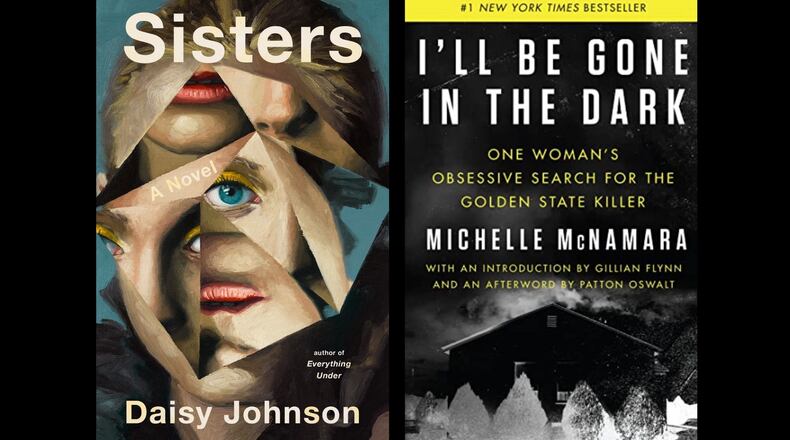Some people are wired to love a good scare.
It’s a predilection never more obvious than it is during Halloween when children and adults alike don frightful costumes and channel their inner witches and demons.
I first began to think about the psychology behind fear as a form of entertainment when a friend of mine was embroiled in a messy divorce, and he became temporarily obsessed with slasher movies, the gorier the better.
According to Psychology Today, engaging in “controlled” fear and suspense — in which we are emotionally stimulated to feel afraid but are not physically in danger — actually evokes a sense of safety. In addition, fear triggers adrenaline, which releases pleasure-producing endorphins and dopamine that give us a sense of euphoria.
I guess that explains why, from the time I learned to read, I’ve had an affinity for scary stories. My first literary obsession was Nancy Drew mysteries, a prodigious series of books penned by a cadre of ghostwriters under the name of Carolyn Keene that debuted in the 1930s. In truth, it wasn’t just the page-turning plots about hidden staircases and secret old clocks that held my interest. I was equally fascinated by the vintage fashions and the use of outdated words like “frock” for a dress and “coupe” for a car. I was a word nerd from an early age.
Later, I graduated to Agatha Christie mysteries and was equally intrigued by the twee English settings and manners. I dabbled a bit in Stephen King, but I prefer my fear rooted in reality, not the supernatural. Therefore, I remain a long-standing devotee of true crime, although I am particular about the content. For instance, I avoid reading about serial killers because the idea of random, opportunistic acts of murder is just too frightening for me to contemplate.
But rules are meant to be broken, and one notable exception is the late Michelle McNamara’s chronicle of her search for the identity of the Golden State Killer, who tormented Californians for decades. Now available in paperback and the subject of a limited documentary series on HBO, “I’ll Be Gone in the Dark” (Harper Perennial, $17.99 paperback) distinguishes itself from the true crime genre in several ways.
For one, McNamara went to great lengths to humanize the victims, and she didn’t dwell on the violence. The book is still scary, though. Details about the killer creeping around suburban homes in the dark will have you checking your door locks and peeking through blinds if you read this book late at night.
The most notable thing about “I’ll Be Gone in the Dark” is the caliber of the writing. McNamara was a gifted author who took a story that could have been formulaic and turned it into an elegant and empathetic piece of literature. Here’s a snippet:
“When he zeroed in on a victim, he often entered the home beforehand when no one was there, studying family pictures, learning the layout. He disabled porch lights and unlocked sliding glass doors. He emptied bullets from guns. Unworried homeowners' closed gates were left open; pictures he moved were put back, chalked up to the disorder of daily life. The victims slept untroubled until the flashlight’s blaze forced open their eyes.”
I don’t know about you, but that sends chills up my spine.
The creepiest thing I’ve read lately, though, is a work of fiction by Daisy Johnson, who spins a chilling yarn in her novel “Sisters” (Riverhead Books, $26). Plucking a couple of familiar tropes from the horror playbook — a spooky old house in the moors of North Yorkshire, England, and an innocent-looking youngster capable of sinister acts a la “The Bad Seed” — she weaves them into a thoroughly modern, highly disturbing shocker that is also beautifully written.
The story begins when an emotionally exhausted mother flees her home in Oxford and takes refuge in her dead ex-husband’s remote childhood home with her teenage daughters, July and September. Some sort of dreadful occurrence has precipitated their relocation, but just what doesn’t become clear until the end.
Just 10 months apart in age, the girls look and act much younger than they are. While their mother secludes herself in her bedroom, they are left to entertain themselves and explore the house on their own. In some ways, the girls seem to share the same brain. July is convinced she can read September’s mind. But as the story unfolds, a disturbing dynamic between the sisters is revealed when they play a game called September Says, where July submits to September’s increasingly awful demands.
About her sister, July says: “Often, at school or at the kitchen table with Mum, I felt as if I moved a little outside my body, could not quite touch or see anything entirely. It was only when September was around that color returned, and I could experience pain or smell the lunch cooking in the school kitchens. She tethered me. Not to the world but to her.”
To say more would give away too much. Suffice it to say that the prose is as gorgeous as the story is unsettling.
Suzanne Van Atten is a book critic and contributing editor for The Atlanta Journal-Constitution. svanatten@ajc.com
About the Author
Keep Reading
The Latest
Featured




